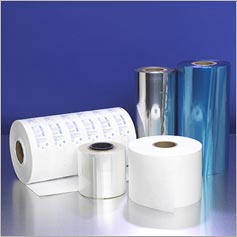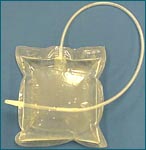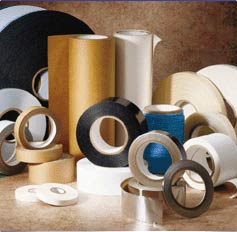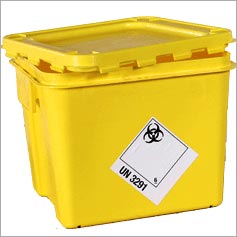Food Packaging Options
There are many options for packaging foods and other products for extended
shelf life maintaining food quality and texture. Shelf stable packaging will
still dominant rigid packaging, pouch and stand-up pouch shapes.
Refrigerated foods in formed rigid containers and flexible film pouches will
continue to expand using barrier structures for gas and moisture protection.
HEPA filtration with positive air displacement during pack-out is a must for
refrigerated foods in today's market environment to ensure food container
safety to the consumers table.
Rigid
Containers
The traditional method for packaging shelf stable foods has been by
retorting foods in a metal or a glass container. This process is a low cost
procedure and has been used for years. This is primarily a batch process
where filled container is put into trays and loaded inside a vessel to be
heated to a 250 plus degree temperature, pressurized and held at these
conditions for prescribed time.
Retorting in a rigid or flexible package kills the microorganisms and
sterilizes package/product that will keep for years. Consumers continued to
accept retorted shelf stable foods even though this process changes the "texture"
of the contents.
A major food company wanted their food products to be shelf
stable but they wanted a shelf stable, plastic, easy open, single service,
microwaveable container for a new market. The "convenience store"
market where the product can be opened, microwave heated and consumed at the
store or at home.
After much development work a thermoformed polypropylene container was
designed that survived retorting conditions using a stock aluminum lid with
an "easy open" benefit. A special polypropylene resin was
developed to provide an oxygen barrier to obtain shelf life requirement as
polypropylene resin did not have low oxygen transmission rate. Ethylene
vinyl alcohol (EVOH) was compounded with copolymer polypropylene to lower
oxygen permeation meeting shelf life requirement. EVOH was preferred over
polyvinyl dichloride(PVDC) for technical reasons. A "weak" section
was designed into the thermoformed cup to control temperature expansion in
an over pressure continuous motion retort.
This was the first shelf stable plastic container that is now known as "Lunch
Bucket" container spawned a new market for a barrier container. Cost
and microwave ability were the two driving reasons for this technology at
the time. This development led to incorporating oxygen barrier in rigid and
flexible packaging materials in use today. "Lunch Bucket " is
still the prime container for a single service, easy open, shelf stable
container and is being followed by "Soup at Hand" using this
technology.
 Film/Foil
Laminations
Film/Foil
Laminations
Film/aluminum foil laminations were being developed for the military Meals
Ready To Eat(MRE) program replacing "C" canned rations. The need
for a 5 year shelf life dictated by Department Of Defense (DOD) required the
use of aluminum foil at the time. Aluminum foil pin holes had to be kept to
a minimum to meet 5 year shelf life requirement. MRE entrees had same
texture problem that existed with retorting, but it was still better and
more convenient than the can it was designed to replace.
Metallized films were developed to replace aluminum foil to eliminate foil
cracking and and improve heat seal integrity. The pouch would "crack"
under low temperature use conditions and heat sealing technology had to be
developed for the MRE to be acceptable for long term storage. With
improvements made in PP film, foils have replaced with metallized films that
provide low oxygen transmission rates and low moisture vapor transmission
rates.
Polyolefin Films

Metal
and glass packaging dominated packaging applications until the late '70's
when plastic resin companies developed resins and resin formulations to
displace these materials on a "cost" basis. Cellophane
applications were the target for polyolefin films citing property/cost
improvements for packaging many foods. Polyolefin films offered better
physical properties, and low moisture resistance(MVTR) over cellophane at a
lower cost than cellophane could provide. As cellophane film lost markets
polyolefin films grew rapidly improving other properties to meet market
needs. These improvements started with major plastic resin companies
research and development programs especially polypropylene films.
Polypropylene had better tensile strength and modulus values and soon
became the dominant material for food snack packaging. Bi-axially oriented
polypropylene (BOPP) became the largest film in use primarily due to cost as
polyethylene film production technology could not produce low <1mil
structures. This advantage enabled oriented PP film known as BOPP to become
the dominant film as a "substrate" film providing stiffness for
bag applications providing stand-up properties. This led programs to improve
oxygen transmission resistance using polyvinyldichloride (PVDC) and ethylene
vinyl alcohol (EVAL) materials incorporating these oxygen barrier compounds
to make film structures.
 Coated
Films
Coated
Films
Coatings were applied by film "converters" to heat seal film in
making bags for snack foods which was the "first" coating
application. Film laminations were next in development using solvent
adhesives as the most expeditious method and is still being used today where
taste and odor transfer are acceptable. To overcome this problem film
co-extrusion technology surfaced and is the dominant method for volume
multi-layer film constructions such as polyethylene, polypropylene,
polyester and other films where specific properties are needed.
Co-extrusions are designed to improve gas barrier resistance, physical and
chemical properties and mechanical reasons for high rate production
equipment.
Resin and Resin Converters
Ethylene gas is polymerized to make polyethylene resin which is extruded
into films (PE), is the dominant in material used in making food bags due to
its properties and low cost. Structurally it lacks stiffness but is quite
adequate for many packaging applications. Propylene gas is polymerized
almost in the same way as is ethylene gas in making polyethylene resin to
make polypropylene (PP) resin and film. The main difference is much higher
polymerization temperatures must be used which makes PP more rigid resulting
in higher modulus and tensile strength properties and higher use temperature
capability. PE and PP films had their own markets but "marrying"
these films created a larger market for film converters. Downsizing occurred
to lower costs where PP film became the selected film where clarity, good
stiffness at room and elevated temperatures for laminated and coextruded
being used today.
Polyester Films

Polyester(PET)
film resin is the latest entrant in flexible packaging. This film has good
gas barrier properties and is being extrusion laminated to films that have
good moisture barrier properties such as PE or PP. Initially, PET was
substituted to replace the use of EVOH or PVDC formulated for gas barrier
properties. PET film is more expensive has good gas barrier property and
offers benefits as good optical clarity, heat resistance, recyclable and
environmentally friendly. Olefin films require chemical stabilizers to
prevent polymer degradation during film manufacture and oxidative
degradation under use conditions that poses environmental concerns, long
term.
Microbial Prevention
Food preparation and packing process environment need to be addressed when
using barrier film laminations. Any microbiological contamination sealed
inside a bag or pouch will be incubated and needs to be addressed before
high barrier molded or film package is used. Head space air needs to be
replaced with filtered air or blanketed with an inert gas displacing plant
air when packing foods. Analysis should be made on packages to correlate
shelf life dating with actual taste testing and microbial tests to be
certain food quality standard is met and the product is safe for use as
directed on the label. From experience, I want to stress the need for plant
cleanliness for packing foods.

Frozen food packaging make organisms dormant
and refrigerated food packages only retard organisms growth for a period of
time which is extended with gas and moisture barriers, but they are still
there. Controlled and modified air package systems eliminate this problem
but are expensive where as just good housekeeping can often be the immediate
answer without great expense. Film Specifications
Film Specifications
Resin formulation, extrusion technology, film converting processes, film
properties are not discussed in detail and should be done for specific
applications to prevent any problems. Film manufacturers and film converters
should provide technical details on any of the structures that were
mentioned and should offer testing films with food product contact before
purchasing any film structure.


 Film/Foil
Laminations
Film/Foil
Laminations Metal
and glass packaging dominated packaging applications until the late '70's
when plastic resin companies developed resins and resin formulations to
displace these materials on a "cost" basis. Cellophane
applications were the target for polyolefin films citing property/cost
improvements for packaging many foods. Polyolefin films offered better
physical properties, and low moisture resistance(MVTR) over cellophane at a
lower cost than cellophane could provide. As cellophane film lost markets
polyolefin films grew rapidly improving other properties to meet market
needs. These improvements started with major plastic resin companies
research and development programs especially polypropylene films.
Metal
and glass packaging dominated packaging applications until the late '70's
when plastic resin companies developed resins and resin formulations to
displace these materials on a "cost" basis. Cellophane
applications were the target for polyolefin films citing property/cost
improvements for packaging many foods. Polyolefin films offered better
physical properties, and low moisture resistance(MVTR) over cellophane at a
lower cost than cellophane could provide. As cellophane film lost markets
polyolefin films grew rapidly improving other properties to meet market
needs. These improvements started with major plastic resin companies
research and development programs especially polypropylene films.  Coated
Films
Coated
Films Polyester(PET)
film resin is the latest entrant in flexible packaging. This film has good
gas barrier properties and is being extrusion laminated to films that have
good moisture barrier properties such as PE or PP. Initially, PET was
substituted to replace the use of EVOH or PVDC formulated for gas barrier
properties. PET film is more expensive has good gas barrier property and
offers benefits as good optical clarity, heat resistance, recyclable and
environmentally friendly. Olefin films require chemical stabilizers to
prevent polymer degradation during film manufacture and oxidative
degradation under use conditions that poses environmental concerns, long
term.
Polyester(PET)
film resin is the latest entrant in flexible packaging. This film has good
gas barrier properties and is being extrusion laminated to films that have
good moisture barrier properties such as PE or PP. Initially, PET was
substituted to replace the use of EVOH or PVDC formulated for gas barrier
properties. PET film is more expensive has good gas barrier property and
offers benefits as good optical clarity, heat resistance, recyclable and
environmentally friendly. Olefin films require chemical stabilizers to
prevent polymer degradation during film manufacture and oxidative
degradation under use conditions that poses environmental concerns, long
term. 